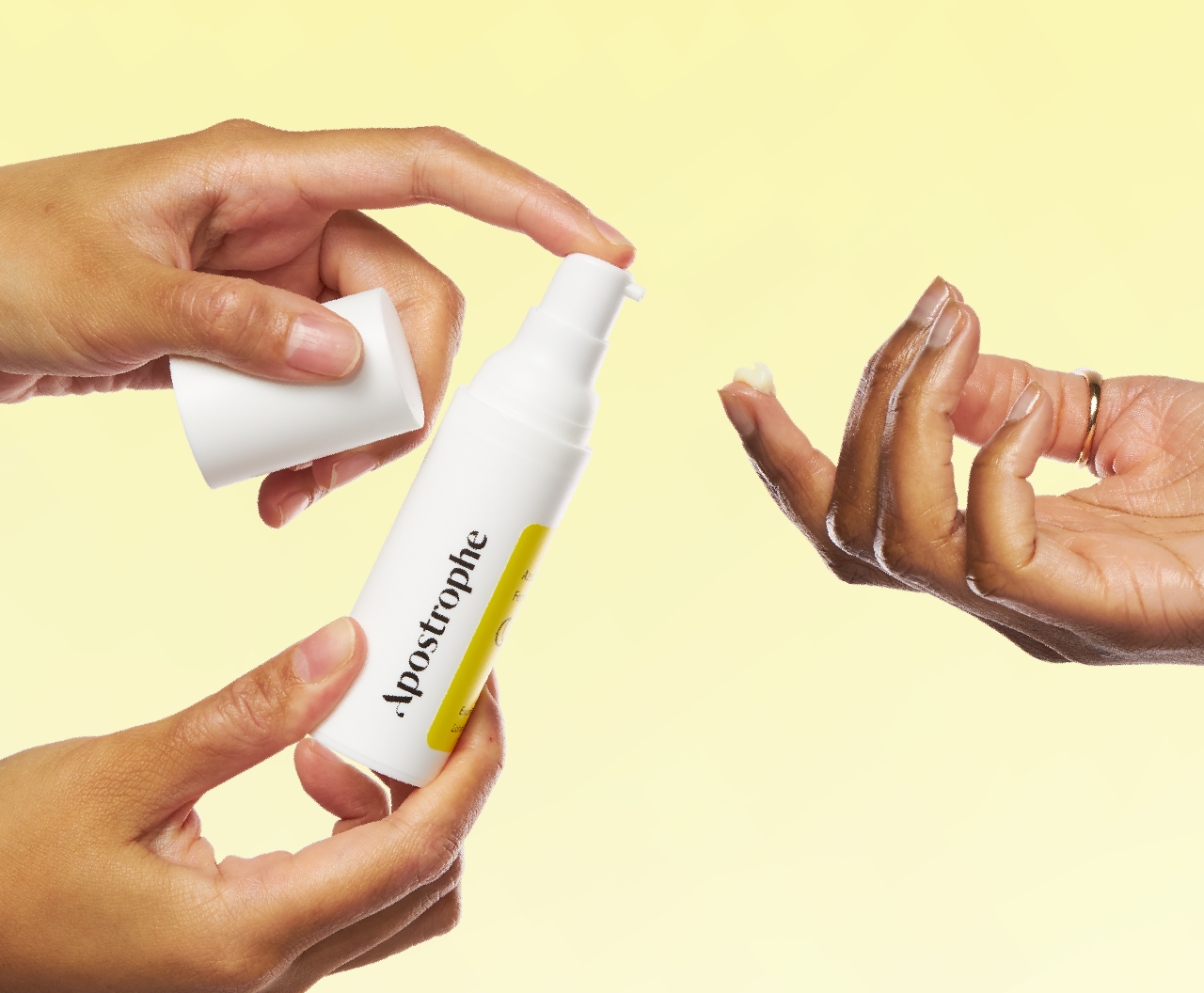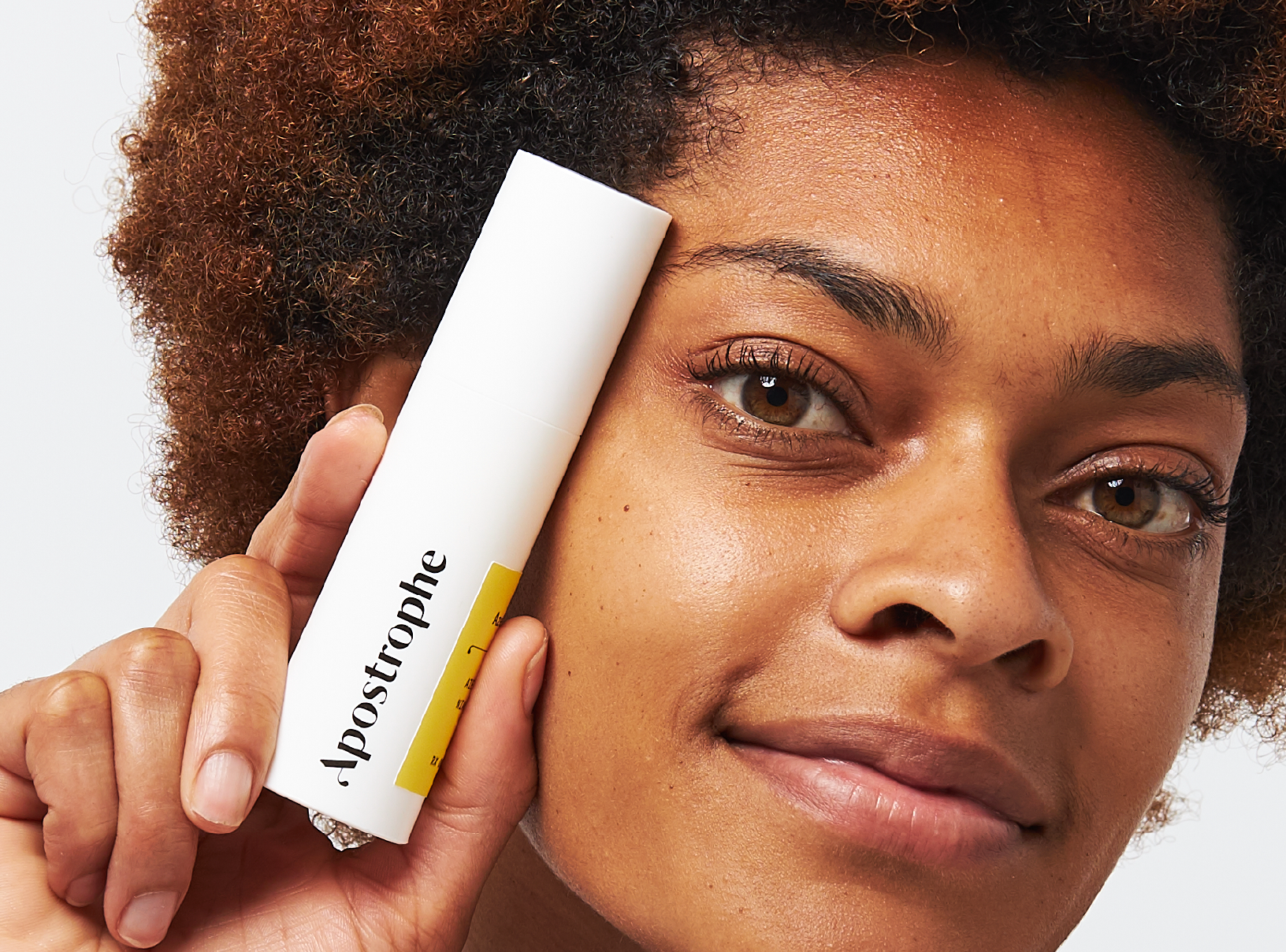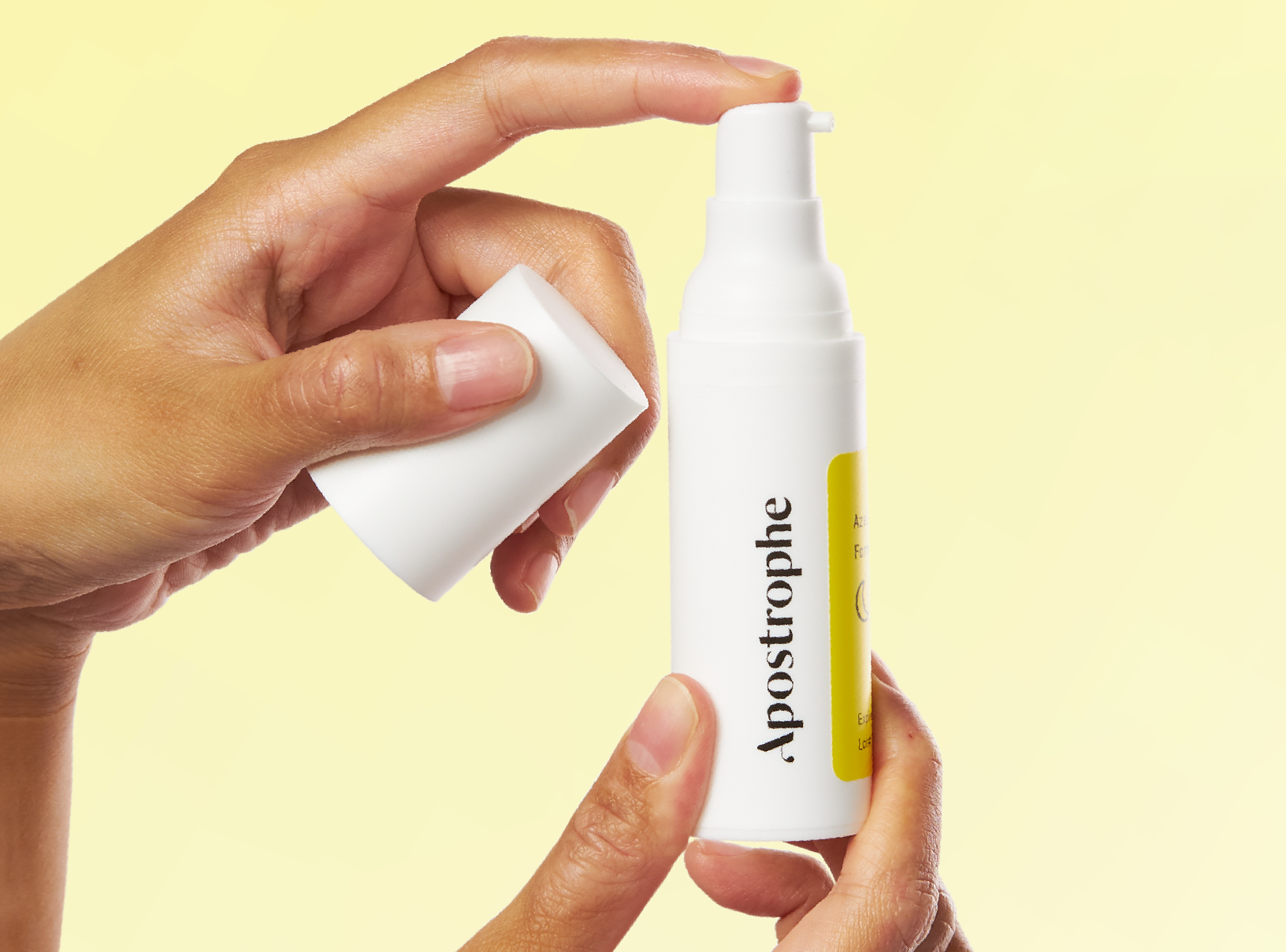Education
How to Use Tretinoin Cream


SHARE
Education
How to Use Tretinoin Cream
Medically reviewed by Aimee Paik, MD
Written by Apostrophe Team
Last updated 11/1/2024
Affordable, effective and easy to use, tretinoin is one of the most widely used topical retinoids for treating and preventing acne, speeding up skin cell replacement and reducing the signs of aging.
Scientific studies showed that tretinoin 0.05 percent gel used daily over a period of 12 weeks reduced levels of acne on the face. Other studies show that daily use of tretinoin cream can make wrinkles and other signs of facial skin aging less obvious.
Whether you’re using tretinoin cream for acne prevention or anti-aging purposes, it’s important to use it effectively. Tretinoin is a powerful, highly effective retinoid, meaning that you’ll probably only need a small amount to get noticeable, lasting results while minimizing any side effects.
Below, we’ve covered the A to Z of using tretinoin cream for acne prevention and anti-aging, from choosing the right strength to successfully applying tretinoin to your face.
Start By Choosing The Right Strength of Tretinoin Cream
Tretinoin creams and gels come in a variety of concentrations, ranging from .01 percent tretinoin to significantly stronger .1 percent formulations.
Although tretinoin is a safe medication, it can cause some side effects when applied to your skin. The most common side effects of tretinoin are dry skin, peeling and irritation, all of which are most common during the first several treatments.
To reduce your risk of experiencing skin irritation, it may be best to begin topical tretinoin treatment using a low to mid-strength tretinoin cream.
Finding the correct tretinoin cream or gel concentration is a very individual process, meaning it could take several months for you to “dial in” your tretinoin use and work out which strength is ideal for your skin sensitivity, acne or other skin issues.
It is important to work with your healthcare provider or dermatologist in finding the best concentration and formulation for your condition.
Apply Tretinoin Cream or Gel at Night
The recommended time to apply tretinoin cream or gel to your face is at night, shortly before you go to bed. This allows the tretinoin to be fully absorbed by your facial skin without any risk of sunlight affecting your skin.
If your healthcare provider or dermatologist recommends using tretinoin at a different time, such as in the morning, the best approach is to follow their advice and instructions.
Applying tretinoin to your face is a simple process that you’ll quickly get used to. In total, there are only six steps to memorize:
With clean hands, wash your face using warm water and a small to moderate amount of mild non-abrasive soap. Make sure that your face is completely clean.
After washing, gently dry your face using a towel. Gently blot your face to dry the skin without causing irritation from rubbing. Make sure to dry your face completely but there is no need to wait 20-30 minutes.
Squeeze the recommended amount of tretinoin cream or gel from the tube and using your fingertips gently massage the solution into the affected areas of your skin. Focus on the cheeks, forehead, chin and other areas with acne or visible signs of skin aging. Be careful not to apply the cream to your eyes, lips or other sensitive areas.
Massage the tretinoin gently into your facial skin. Apply the cream or gel evenly to the affected parts of your skin for even absorption. One pea-sized amount of tretinoin should be enough for your entire face. It can take one to two minutes for the tretinoin cream or gel to begin to absorb into your skin, at which point it should no longer be visible.
If you have dry, flaky or peeling skin, you can apply the moisturizer first before tretinoin. Moisturizer can be useful in preventing the flaking and peeling side effects that some people experience from tretinoin.
Dealing With Tretinoin Side Effects
Side effects from tretinoin are fairly uncommon but can happen, particularly during the first few of use. Many tretinoin users experience a “purge” in the first weeks of treatment as their skin adjusts to the medication.
During this period, there are several steps that you can take to reduce your risk of experiencing tretinoin side effects:
Avoid spending time in the sun. Tretinoin makes your skin significantly more sensitive to light, particularly in the first weeks of treatment. If you experience dry skin, moisturize. It’s perfectly safe to use a moisturizer at the same time as tretinoin, although you should avoid using moisturizers that contain any alcohols or ingredients such as benzoyl peroxide, which can worsen dry skin. One study from 2006 shows that moisturizers containing vitamins such as niacinamide, panthenol, and tocopheryl acetate can complement tretinoin, providing improved results from treatment.
Speak to your healthcare provider about an alternative tretinoin dosage. Some tretinoin users experience side effects such as dry skin and irritation that decrease or disappear at a lower concentration.
Avoid using an excessive amount of tretinoin cream, and follow the instructions on how much you need. You only need to use a pea-sized amount of tretinoin to cover their entire face. Using too much tretinoin cream can increase your risk of experiencing side effects without offering extra benefits.
Follow your healthcare provider’s instructions. Tretinoin cream is designed for use once per day, typically in the evening. Follow the instructions and do not use tretinoin more frequently than prescribed, as this will not provide faster or better results.
Avoid laser, chemical or waxing treatments while using tretinoin. Many of these treatments can affect your skin and increase your risk of experiencing side effects. It’s best to consult your healthcare provider before considering any additional skin treatments.
If you experience minor side effects, don’t panic. Minor skin irritation, peeling and redness are common during the first few weeks of tretinoin usage, meaning there’s likely no need to panic if you notice that your skin gets worse before it gets better. If you experience persistent or severe side effects from topical tretinoin, speak to your healthcare provider. Most tretinoin side effects are temporary and easy to treat, letting you enjoy the benefits of tretinoin without any negative effects on your appearance or quality of life.
Learn More About Tretinoin
From eliminating acne to helping you reverse the signs of aging, tretinoin has a wide range of potential benefits for your skin. For more information on using tretinoin, read our Tretinoin 101 guide or our complete guides to using tretinoin for acne management.
This article is for informational purposes only and does not constitute medical advice. The information contained herein is not a substitute for and should never be relied upon for professional medical advice. Always talk to your doctor about the risks and benefits of any treatment.
Shop this post

Retin-A Micro
Like what you just read? Sign up for our email list to get the scoop on skincare science delivered straight to your inbox.

Deep Dives
A dermatologist shares his thoughts on the recent studies about benzoyl peroxide and benzene.
Read More
Education
What is milia?
What is milia? Today, we’re jumping into one type of bump that you may have heard about most commonly in infants — milia.
Read More
Education
Best moisturizer for acne-prone skin
If you have combination acne-prone skin, figuring out which moisturizer is best for your skin might be tough. In this guide, we break down the best moisturizer for combination, acne-prone skin.
Read More
